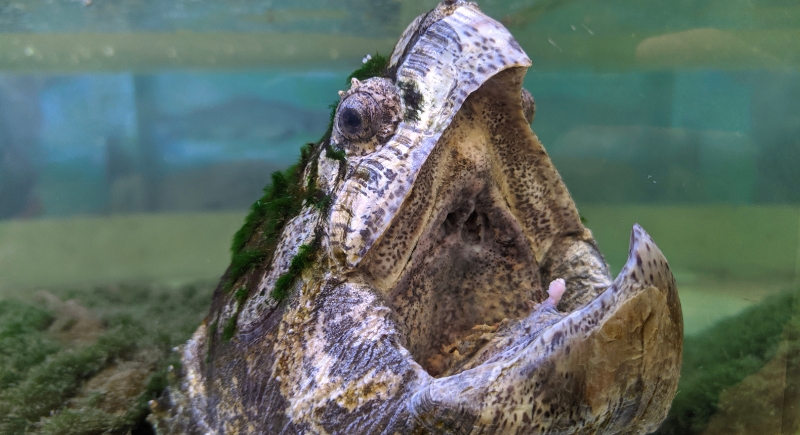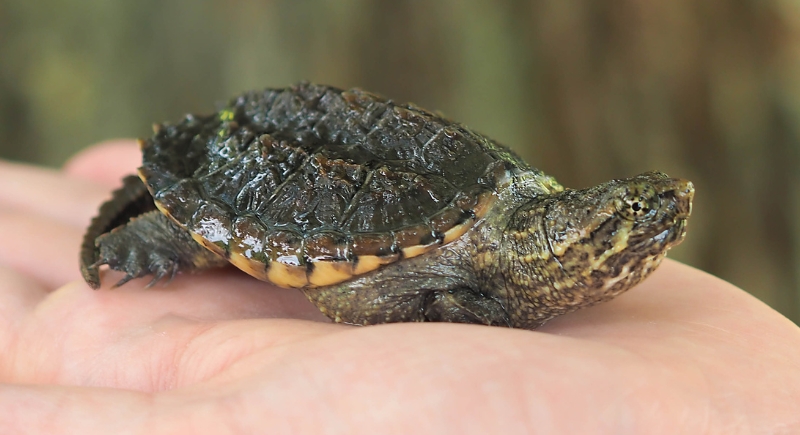5 Fascinating Facts That Will Change How You See Snapping Turtles
Snapping turtles often get a bad reputation for their hooked jaws and rugged appearance. They look like creatures built only for defense, but the truth is far more interesting. These reptiles have been around for millions of years, outlasting species that disappeared long ago. Their ability to survive in so many different habitats tells you something about just how adaptable they really are.
What makes them worth a closer look is the part they play in keeping ecosystems balanced. A snapping turtle can be a predator, a scavenger, and a cleaner all in the same day. Once you see how much work they quietly do in rivers and ponds, it’s hard not to appreciate them differently.
Survivors Older Than the Dinosaurs Themselves
Snapping turtles belong to one of the oldest turtle families on Earth. The family Chelydridae has existed for tens of millions of years, with fossils showing their lineage stretching back at least 90 million years. This means they were present when dinosaurs still roamed the planet and managed to survive the mass extinction that wiped them out.
Although scientists debate which reptiles were the earliest true turtle ancestors, there is agreement that snapping turtles represent one of the most ancient surviving turtle lineages, keeping a form similar to their prehistoric relatives.
Meet The Two Kinds Of Snapping Turtles
There are two well-known types of snapping turtles: the common snapping turtle and the alligator snapping turtle. The common snapping turtle, Chelydra serpentina, lives across much of eastern North America. Most adults weigh between 10 and 35 pounds, though some individuals can be heavier, with rare reports exceeding 70 pounds.
The alligator snapping turtle (Macrochelys temminckii) is heavier and more rugged than the common snapper. Its shell has sharp ridges, and its tongue carries a worm-like tip that lures fish into range. Large males can exceed 200 pounds, ranking among the biggest freshwater turtles. While the common snapper is widespread, this species is limited to rivers of the Mississippi Valley and Gulf Coast.
The Truth About Their Bite

Image via Getty Images/Rahadian Pratama
Snapping turtles earned their name for a reason, and their bite can be powerful. Measurements of bite force vary, but studies show that common snapping turtles can generate between 200 and over 500 Newtons, while the alligator snapping turtle can exceed those numbers depending on its size. By comparison, human molars are capable of producing about 1,000 to 1,100 Newtons of force.
Although snapping turtles cannot match the jaw strength of large mammals, their sharp, hooked beaks can cause serious injury if handled carelessly. In the water, they generally remain calm and avoid conflict, while on land, they act more defensively since they cannot retract fully into their shells.
Why Snapping Turtles Are Nature’s Janitors
Snapping turtles eat just about anything they can catch or find: fish, frogs, plants, invertebrates, and even the occasional bird or turtle. They’re also quick to scavenge, removing dead animals from ponds, lakes, and rivers. By recycling nutrients and limiting the spread of disease, they help keep freshwater ecosystems in balance. It’s this cleanup role that makes them the quiet custodians of their habitats.
Long-Lived Reptiles Facing Modern-Day Threats

Image via Getty Images/Lisa York
A snapping turtle that survives its vulnerable youth can live for decades. Wild individuals are commonly documented to live around 30 years, with some believed to exceed 50 years in both wild and captive conditions. The survival rate for hatchlings is very low, with estimates that only one percent or fewer reach reproductive age. Adult turtles face additional challenges such as vehicle collisions and human harvesting.
In Virginia and other states, heavy commercial collection of snapping turtles in the early 2010s led to concern over population declines. Research confirmed unsustainable harvest levels, and new regulations introduced in 2019 placed limits on collection to help safeguard the species’ future.